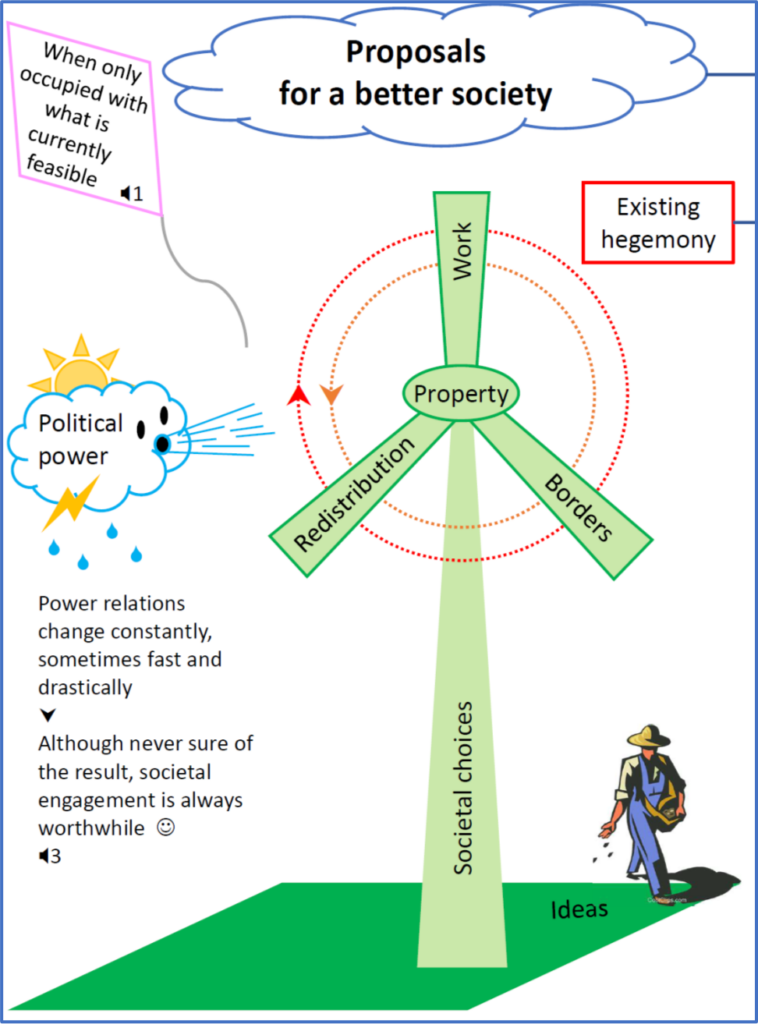Keeping in view the society we wish for – Reflections by Nele Schmitz and proposals for a more sustainable society, inspired by the book of Thomas Decreus and Christophe Callewaert

Read more here:
Timber is a natural resource that is all around us in the form of solid wood, fibreboard or veneer in constructions, furniture, decorations, … or as pulp and paper products, or in summer times as charcoal on the BBQ. Sustainable use of timber starts with legal use of timber. Illegal logging doesn’t respect management plans, (inter)national regulations, or people’s needs. Therefore, the Global Timber Tracking Network was started in 2012 as a network of stakeholders involved in timber research, industry or governance. The aim of the GTTN is to operationalise timber tracking tools to help implement the current regulations concerning the trade in timber (for the EU that is the EUTR).
Timber tracking based on the inherent wood characteristics is the only way to be sure that wood or a wood product at the end of the supply chain is what the documents say it is, and is hence legal. There are currently 6 different timber tracking methods that can reveal species and/or geographic identity. Depending on the exact identification question, one method will be more suitable than the other. Therefore, an infogram was developed to give an overview of the current capacities of the different timber tracking tools. The guide links to a list of all experts in timber tracking, currently know of in the world.
The infographic of timber tracking tools creates the perfect base to discuss the gaps and opportunities for further developments in the field of wood identification. Two critical parts of the wood identification process, open for more advancements are the collection of reference samples and the data analysis. With global timber supply chains there is a need for harmonization of procedures to secure the reputation of the different wood identification tools and to facilitate collaborations. Also, a common language is essential for any collaboration and hence for further innovations. Therefore, it is important to investigate the current barriers of information flow and to evaluate how much information we miss if we only consider English language literature.
Website Global Timber Tracking Network: https://globaltimbertrackingnetwork.org/
For further information please contact Dr. Nele Schmitz:
nele.schmitz(at)thuenen.de
nele.schmitz(at)scensers.org
The pursuit of sustainability requires more and better knowledge, but it is how knowledge is used that matters most. It is part of knowledge that social-environmental systems are influenced by interacting production and consumption processes. Understanding the dynamics of systems and how they can be influenced remains a key challenge. How can existing governance processes be reshaped so that they are more conductive to achieving social wellbeing? How can knowledge be linked with action?
Spotlights on the book ‘Pursuing Sustainability’ (Pamela Matson, William C. Clark, Krister Andersson; Princeton University Press, 2016):
Dr. Nele Schmitz, nele.schmitz(at)scensers.org
As part of the Sixth Global Environment Outlook (GEO-6), a separate assessment for the pan-European region was launched in June 2016 at the 8th Environment for Europe Conference in Batumi, Georgia. The “GEO-6 Assessment for the pan-European region” provides a comprehensive picture of the current state, trends and an outlook for the environment in the region, and highlights factors that influence prosperity, human health and wellbeing. Focused under the lens of the 2030 Agenda for Sustainable Development (2030 Agenda), the report demonstrates that the challenges, but also the solutions, today are highly interlinked and more systemic.
“Clean air, water, resilient ecosystems and sound management of chemicals and waste are essential for a healthy planet and healthy people. Closing resource-use loops through the promotion of circular economy principles will be a necessary part of the solution, providing much-needed jobs and economic sustainability. The transition towards an inclusive green economy in the pan-European region presents a significant opportunity, which will require the active engagement of a “coalition of the willing” at all levels of society. It demands a fundamental redesign of energy, food, mobility and urban systems, as well as a change in lifestyles. Countries in the region have much to contribute to the shaping of a shared vision of the future.” (Foreword UNEP Executive Director, Achim Steiner, to the GEO-6 Assessment for the pan-European region)
Direct download of report as pdf: GEO-6 Assessment for the pan-European region
E-book, particularly useful for mobile access: GEO-6 Assessment for the pan-European region (E-book)
Related material and access to all GEO-6 regional reports: UNEP Science-Policy Interface
Dr. Sigrid Kusch contributed to the report as coordinating lead author of Chapter 2 “Environmental state and trends” and as co-author of Chapter 4 “Outlooks and emerging issues”.
The brief “Industrial symbiosis: powerful mechanisms for sustainable use of environmental resources” was submitted by Sigrid Kusch to the UN Global Sustainable Development Report 2015. All briefs are open for rating and discussion until 31 March 2015. Some of the topics will be featured in the relevant chapters of the 2015 GSDR report. This provides a good opportunity to bring selected topics forward.
Link to the platform with all briefs: https://gsdr2015.wordpress.com/
Direct link to the brief “Industrial symbiosis”: https://gsdr2015.wordpress.com/2015/03/08/industrial-symbiosis-powerful-mechanisms-for-sustainable-use-of-environmental-resources/
Update 28 June 2015:
The GSDR Report 2015, Advance Unedited Version, is available on the Sustainable Development Knowledge Platform:
https://sustainabledevelopment.un.org/